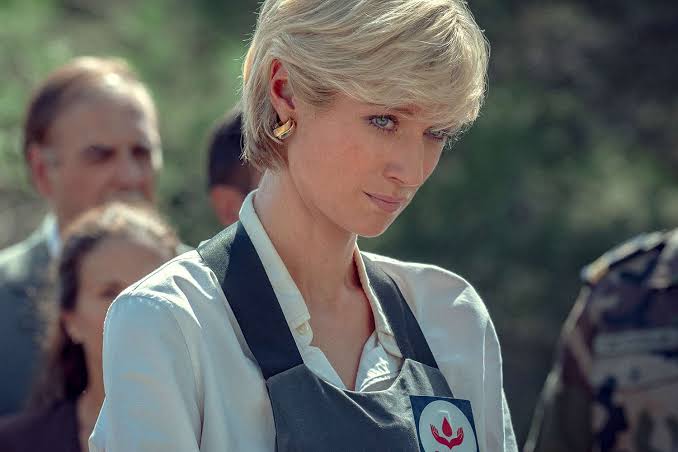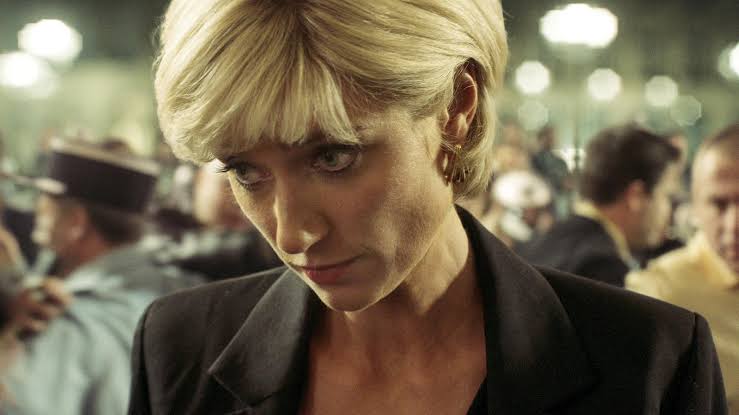The Crown Season 6 Part 1 embarks on its final season with a poignant yet familiar trajectory, diving straight into the tragic event that shaped a generation. The opening scene unfolds with a man walking his dog on a narrow street, the Eiffel Tower looming in the background, signaling the inevitable. A black car speeds into a tunnel, followed by a cascade of cars and motorcycles, culminating in the haunting sound of a deadly crash. In the midst of this turmoil, we are anchored by the perspective of a dog walker, who, witnessing the unfolding tragedy, reaches for his phone to call for help. This evocative scene, though laden with the weight of historical resonance, sets the tone for a season that grapples with both its strengths and weaknesses.
As the narrative unfolds, the weaknesses of the season become apparent, echoing the challenges faced in the previous installment. One notable aspect is the miscasting of Dominic West as Prince Charles. West’s portrayal of the heir to the throne falls short in capturing the complexity and nuance of the character, leaving audiences grappling with a performance that lacks the depth required for such a pivotal role. The decision to persist with this miscasting is a disappointing choice, as it hampers the overall authenticity of the portrayal of key historical figures.

Furthermore, the season leans heavily into its flaws, notably the recurrent use of reconstructions of real images and videos. This reliance on visual mimicry, while perhaps intended to evoke a sense of historical immersion, comes across as unenlightening and redundant. The endless reconstructions, recognizable cultural touchstones from the 1990s and Diana’s death, contribute little to the narrative and risk alienating viewers who may find themselves more interested in a fresh perspective on these historical events rather than a mere reenactment.
The first four episodes of Season 6 Part 1 are set in 1997, strategically flashing back two months from the Paris car crash and then moving forward through the poignant events surrounding Diana’s funeral. Elizabeth Debicki steps into the iconic role of Princess Diana with commendable skill, offering a nuanced and compelling portrayal of the beloved figure. However, the true test lies in the subsequent six episodes arriving on December 14, promising to navigate through pivotal moments, including the wedding of Charles and Camilla in 2005.
Also read: Role Play Release Date on Prime Video, Cast, Crew, Plot and More
One commendable aspect is the show’s respectful treatment of the scenes surrounding Diana’s death and its aftermath. The decision to refrain from depicting the crash or Diana’s lifeless body is a conscious choice that reflects sensitivity to the real-life tragedy and acknowledges the emotional impact on viewers. The inclusion of posthumous interactions with Diana, where she engages in conversations with Charles and the Queen, played by Imelda Staunton, is presented as a manifestation of their grief rather than a supernatural element. Creator Peter Morgan has clarified that these interactions are imagined, offering a glimpse into the characters’ emotional landscapes as they grapple with loss.

Despite these positive nuances, Season 6 Part 1 leaves lingering questions about the show’s ability to overcome its persistent shortcomings. The unfolding narrative, while touching on the immediate aftermath of Diana’s death, raises concerns about the show’s trajectory as it progresses into later years. Can The Crown deliver a compelling conclusion to this regal saga, rising above its casting missteps and overreliance on historical reconstructions?
In conclusion, The Crown Season 6 Part 1 navigates the delicate terrain of historical events with a mix of poignant moments and persistent weaknesses. While Elizabeth Debicki’s portrayal of Princess Diana stands out as a highlight, the miscasting of key characters and the overuse of reconstructions hinder the show’s potential. As the final episodes approach, the fate of The Crown’s legacy hangs in the balance, dependent on its ability to transcend its flaws and provide a satisfying conclusion to this iconic portrayal of royal history.


